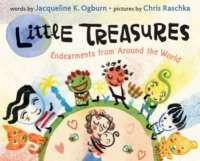
Step into unique homes from around the world and discover the many fascinating ways in which people live and have lived. If you lived in the mountains of southern Spain, your bedroom might be carved out of a mountain. If you lived in a village in South Africa, the outside of your house might tell the story of your family. And if you lived in a floating green house in the Netherlands, you could rotate your house to watch both the sunrise and sunset. With intricate bas-relief collages, Giles Laroche uncovers the reason why each home was constructed the way in which it was, then lets us imagine what it would be like to live in homes so different from our own. Showing the tremendous variety of dwellings worldwide—log cabins, houses on stilts, cave dwellings, boathouses, and yurts—this book addresses why each house is build the way that it is. Reasons—such as blending into the landscape, confusing invaders, being able to travel with one’s home, using whatever materials are at hand—are as varied as the homes themselves. List of Houses included: Dogtrot log house, based on dogtrots built in the southern U.S. Chalet, based on chalets built in the Austrian Alps. Pueblo, Taos, New Mexico Connected barn, based on connected barns common in northern New England. Cave dwelling, Guadix, Andalucia, Spain Palafitos (house on stilts), Chiloe Island, Chile Palazzo Dario, Venice, Italy Chateau La Brede, Bordeaux, FranceTulou, Hangkeng village, Yongding, China Half-timbered houses, Miltenberg am Main, Germany Greek island village houses, Astipalaia Island, Greece Decorated houses of Ndebele, Pretoria, Transvaal, South Africa Yurt, based on yurts in Mongolia and other parts of central Asia. Airstream trailer, USA Floating house, Middleburg, the Netherlands Tree house, USA.
- ISBN: 9780547238920
- Author: Laroche, Giles
- Published: 2011 , Houghton Mifflin Books for Children
- Themes: houses
- Descriptors: Intermediate (ages 9-14), International, Nonfiction, Picture Book, Primary (ages 6-9)
- No. of pages: 32

Marie: If You Lived Here is a book that I find compelling in many ways. First, the cut collage illustrations are fascinating and I find myself wanting to spend great amounts of time admiring the details of the architecture featured in the book. I also find the language that describes the differences in the homes to be lively and entertaining and I appreciate the reoccurring features of the text such as the “fascinating facts” that are listed for each home as well as the “materials” involved, the “locations” and the “dates” such houses were popular. This book reminds me of how in an era where informational text is being pushed so heavily, how amazing so many informational books are. One of the things I’ve been thinking about this book also is the books I’d like to partner with it, as this book seems to call out to me to be a part of a text set.
Prisca: I agree, Marie! The book is rich with information, organized in a way that allows readers to get an overview or read to learn more details. I like too how each page starts with “If you lived here, you…” which invites readers to imagine life in that place. The world map at the back, with a smaller image of each place, is helpful too and could lead to further inquiries about different regions.
Marie: Yes, I think this would be a great piece of a text set that features many ways of living in the world. I like the idea of it being a part of inquiry into a variety of global regions.